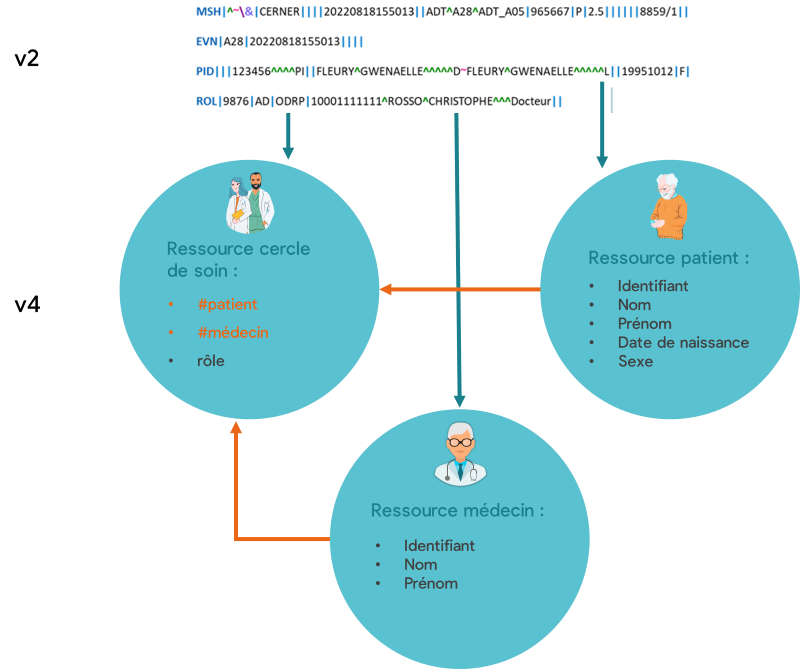L'interopérabilité et le HL7 FHIR
De nos jours, le besoin d’échanger des données de santé et de les exploiter facilement est accru. Dans le cadre des suivis connectés, la pandémie de covid-19 en est le 1er indicateur.
C’est dans l’intérêt des outils logiciels d’être à la pointe des dernières nouveautés en interopérabilité pour garantir une communication simplifiée et une synchronisation des informations utiles au suivi du patient.
Pour en savoir plus sur l’interopérabilité, découvrez notre article dédié.
Dans ce cadre, le standard Hl7 (health level 7), notamment dans sa 2ème version, est déjà très répandu et permet de répondre à un grand nombre de cas d’usage grâce à sa notion d’évènements et de structure flexible de fichier.
Cependant certains cas d’usages manquent encore à l’appel pour le HL7 v2 et c’est ainsi qu’intervient le standard HL7 FHIR.
Le FHIR
Le mot FHIR® est un acronyme correspondant à :
- F – Fast
- H – Healthcare
- I – Interoperability
- R – Resources
C’est une nouvelle méthode en interopérabilité pour la santé, rapide à implémenter et se basant sur des ressources, grâce à des composants modulaires découpés logiquement (patient, séjours, cercle de soin, plan de soin, …).
Le FHIR® est en fait la 4ème version du format HL7. Sortie en 2014 et reprenant l’expérience acquise sur l’implémentation des versions précédentes en ajoutant la notion de ressource et une couche WEB/API, elle promet de faciliter et d’accélérer l’échange de données de santé.
Les ressources étant liées et dépendantes, elles peuvent être assemblées pour retracer un événement dans le suivi du patient. De la même façon, on peut schématiser le rapprochement des données entre le format HL7 v2 usuel et le format HL7 v4 présenté sous forme de ressources.

Les spécifications FHIR® comprennent un peu moins de 150 ressources initiales qui permettent de couvrir 80% des besoins. Elles se distinguent des autres standards par la flexibilité à l’usage. Ces ressources sont en effet suppléées par des extensions locales définies par des utilisateurs pour un besoin spécifique ou par des extensions nationales produites par des organismes experts (Interop’Santé en France, ehealth en Belgique).
Les utilisations du FHIR dans le monde de la santé
Le FHIR® est déjà utilisé par les plus grandes entreprises internationales qui se lancent sur le marché de la santé telles que Apple, Google ou Microsoft.
Si FHIR a le potentiel de considérablement améliorer les échanges actuels et d’introduire une nouvelle logique d’implémentation, en valorisant les silos de données de santé, il y a toutefois une condition importante. Le FHIR doit être plus globalement proposé par les outils pour s’implanter dans les établissements de santé comme a pu le faire le HL7 v2. Même si cela nécessite souvent une migration ou une transformation des flux déjà en place.
En France, il est préconisé dans des cadres d’usages spécifiques établis par l’Agence du Numérique en Santé dans le Cadre d’Interopérabilité des Systèmes d’Information de Santé (CI-SIS) :
- Volet gestion d’agendas partagés
- Volet cercle de soin
- Volet cahier de liaison
- Volet partage de documents de santé en mobilité
- Volet notification d’évènements
- Volet traçabilité d’évènements
Le FHIR® sera aussi employé pour l’échange de données de santé avec les espaces patients nationaux tels que Mon espace santé en France et le Dossier Electronique du Patient en Suisse.
Les utilisations du FHIR chez exolis
Côté exolis, notre logique globale d’intégration et de stockage des données est déjà basée sur celle du FHIR et nous gérons plusieurs ressources permettant notamment :
- La gestion du cercle de soin
- L’envoi des données médicamenteuses pour l’article 51
- L’envoi des questionnaires remplis par un patient
Nous sommes toujours à la recherche de nouveaux besoins à implémenter grâce au FHIR®.
C’est dans cette optique que nous avons participé au Projectathon organisé par l’ANS du 14 au 16 mars 2022, au cours duquel, nous avons validé notre utilisation du cercle de soin avec les éditeurs de santé SIB et Enovacom.
Nous observons également un nombre croissant de start-ups ou de nouveaux logiciels qui choisissent de se lancer en utilisant nativement FHIR dans leurs applications.
Il s’agit donc d’un format voué à prendre une place importante dans le monde de la e-santé et nous sommes disponibles pour vous accompagner dans ce déploiement.







